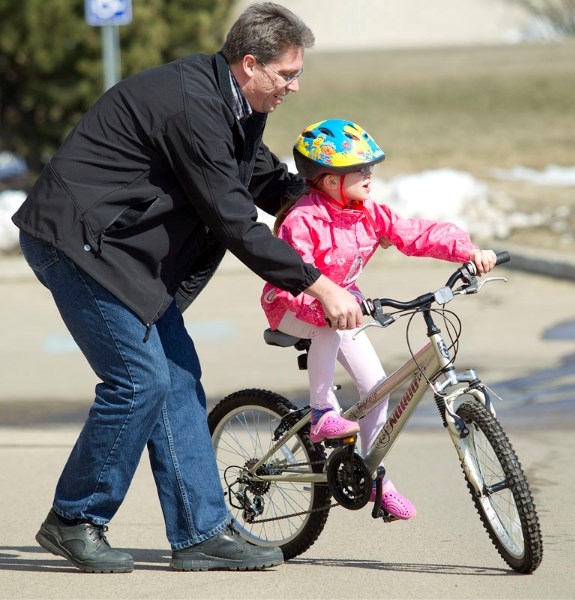Children and youth are more likely to strap on a bicycle helmet today than they were before St. Albert made the safety gear mandatory for all ages, says a team of researchers.
A study of bicycle helmet usage found children were 53 per cent more likely to wear helmets in 2006 compared to data gathered at the turn of the millennium when no rules were in place. The study also found a six-fold increase in usage among adolescents.
"St. Albert's experience serves as a model for the entire province," said Dr. Don Voaklander, a professor at the University of Alberta and director of the Alberta Centre of Injury Control & Research, which conducted the study with the help of physicians from the University of Calgary and U of A.
In comparison, helmet usage among children in other parts of the province increased just 29 per cent over the same period and 112 per cent among adolescents.
"There is strong evidence to support the role of helmet legislation in improving the rates of cycling helmet use in many communities," added Dr. Mohammad Karkhaneh, a graduate student at the U of A's school of public health.
The initial data was gathered in 2000, two years before Alberta adopted legislation making bicycle helmets mandatory for children under 18. That information was compared with figures taken six years later — after St. Albert introduced a bylaw making helmets mandatory for riders of all ages.
Coun. Len Bracko pushed for that change in 2006, not long after watching his wife Barb take a spill on her bike after being cut off by a motorcycle.
Barb flipped over her handlebars and landed on her head. Fortunately, she was wearing a helmet and suffered only bruising, but it could have been much worse, Bracko realizes.
He said he's gratified the study results reinforce a lesson some learn the hard way. But he believes it's the kind of rule that shouldn't be left up to individual municipalities. Province-wide legislation, which the study authors also favour, would cut down on provincial health care costs through injury prevention, he said.
"The province should take the leadership now that they have the information," he said of the study. "I encourage our MLAs to bring it forward."
Mayor Nolan Crouse didn't believe government had any business telling adults what to wear on their heads when the bylaw was introduced in 2006. Crouse, then a city councillor, voted against the rule change, but says he's come around.
That change in heart is partly due to a similar accident he suffered last year while riding on a trail near Big Lake. But he also sees value in setting a good example for the city's youth.
"The role modelling has to come from adults," he said.
Ongoing education
Outside the study the city has little statistical data on the number of incidences of cyclists forgoing headgear on trails. Garnet Melnyk, senior peace officer with the city's municipal enforcement branch, said staffing shortages last year prevented officers from doing much in the way of formal enforcement.
When they do encounter helmetless cyclists, they're handed an information card to ensure they're aware of the rules. Officers use their discretion about whether to hand out tickets but for the most part people react favourably to the rules, he said.
"For the most part, everyone's pretty much complied with the bylaw," Melnyk said.
New signs will be posted on city trails advising residents of the headgear rules, however the timeline is still unclear, he added.




